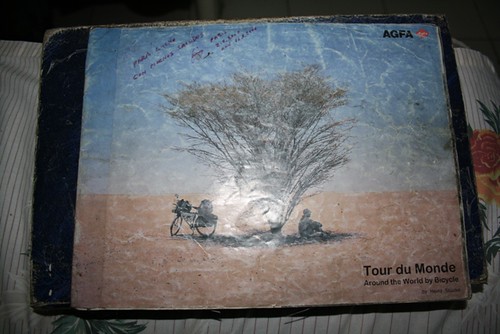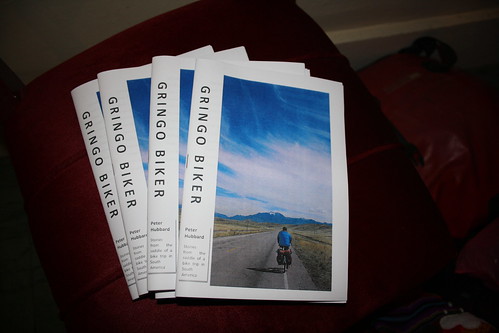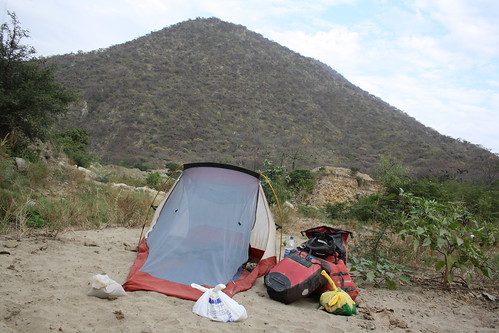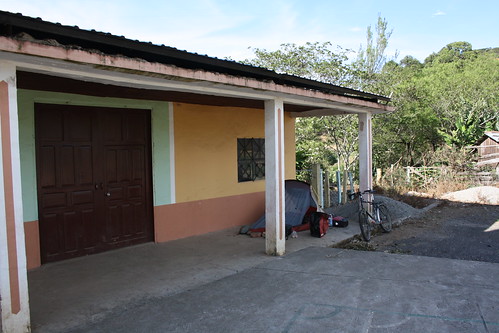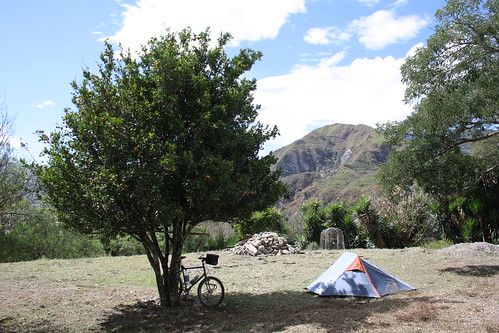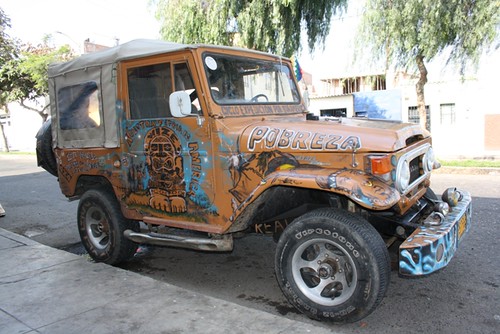

One of the cool things about staying in the Casa de Ciclistas in Trujillo is getting to meet other cyclists. I was lucky enough with the selection on offer. A pair of dreadlocked Argentinians and a trio of Columbians. Good practise for my Spanish. We cooked several meals together including several spicey rice dishes from the Columbians and a tradditional Arroz con Leche from the Rastas. Although, I still think rice pudding is a superior dish.
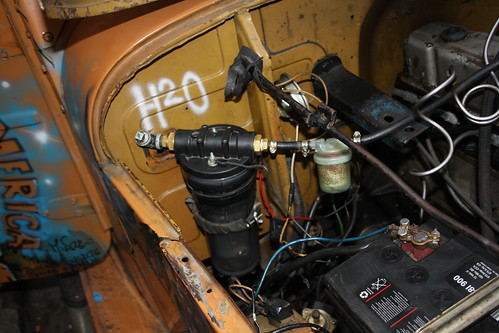
One evening we all set off the University. I hadn't really understood why we were going but it turned out that David, one of the Columbians, was going to give a talk to some uni students about Hydrogen.
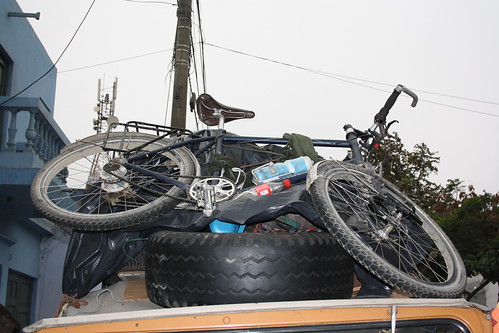
Unusual choice of subject, I thought. Then, out of his bag, he produced a thing. The thing turned out to be for making hydrogen gas by electrolysis of water. Three hours of explanation in Spanish followed. The hard wooden stool I was sitting on didn't help.
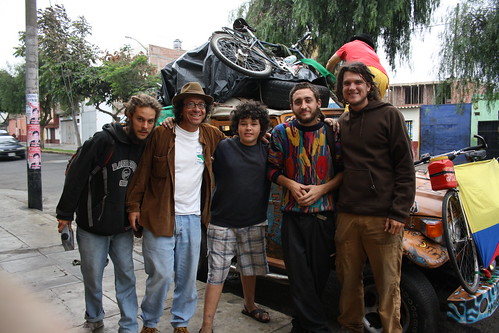
A few days later, in a conversation about a dangerous section of the road ahead, I discovered that David had a car. Funny sort of cyclist to have a car. But he was acting as a support driver for a large expedition of cyclists. Over 30 Columbians who were spread out over the route, a circumnavigation of the continent. He offered to give the Argentinians and me a lift past the dangerous bit. Sure, why not?
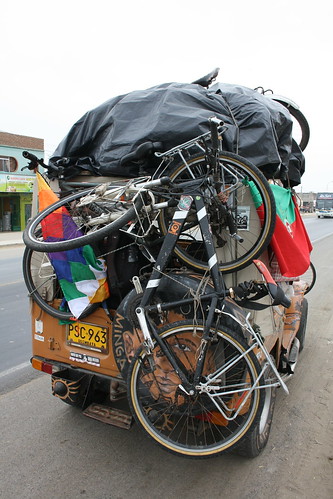
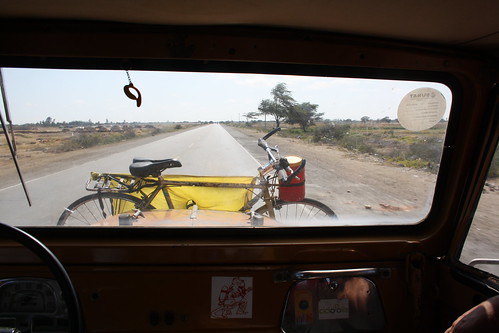
That night I came back from looking around the town and saw it.
"What's that?"
"It's a car!"
I could see it was a car, but I thought to myself, that is a calamity.
It was also a fairly small calamity considering it was going to carry six people, 4 bikes and a small mountian of gear. And the Columbians had a lot of gear. In pre-dawn darkness we began the task of lashing all the kit on. I went back to check if I had left anything and noticed a small orange glow above me. Sebastian was sat on the top step smoking a joint.
"
Desayuno," he whispered.
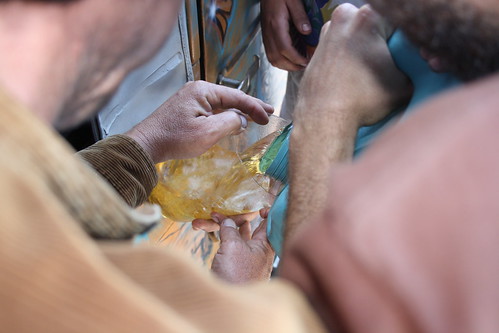
My bike was the last thing to be loaded on. A good choice as it wasn't crushed under a pile of other junk. A bad choice because all the ropes had been used up and I had to tie it on with a wet t-shirt. We finally all piled in. Easier said than done as the back door had been blocked up with lashed on bikes. We climbed through the windows negotiating the roll-bars with limbo-dancer agility. The back of the jeep was taken up by boxes of the Columbian's junk. The four of us were squashed together. As we lurched off it was obvious that
Calamity was dangerously top-heavy. Everytime we hit a speed bump the four of us in the back were thrown around. There were no seats and not really enough room. Especially with Christian, Carlos' son. He is affectionately known as Gordito (the little fat one) and calls his dad Gordo. This is a very strange young man. Carlos is a stocky build but not really fat, at least not like his son. At twelve years old he has thighs that are bigger than mine. And it isn't down to cycling.
Calamity supposedly ran on hydrogen but in reality it ran on plain old petrol. Lots of it. David and Carlos had almost no money. So, at each petrol station we would all pile out and David would issue us with stacks of Columbian CD's and posters which we would try and sell to unsuspecting passers-by until we had made enough for the next tank-full. When we headed across the desert we filled up a large petrol canister which had to be squeezed in through the window, under the roll-bars, and gave us even less room. And it leaked.
As we pressed on, wind rattling through the hunk-of-junk, Gordito sang loudly and tunelessly. Or, if he felt so inclined, he would imitate the noise of the engine. This could keep him entertained for hours. If we were unlucky enough to be overtaken by a police car then he would be singing "nee-nah" for the next 15 minutes. Sebastian had had enough and told him to sing out of the window. I began to suspect that there might be something amiss with Gordito. Perhaps some sort of hyperactive problem.
Anyway, at this juncture, Andres took out his homemade pipe. I had seen him carve it out of the pip from a giant avocado a few days before. And started trying to light it in the windy squishy chaos. He wasn't having much success and threw each used match on the floor. Right next to the gasoline canister.
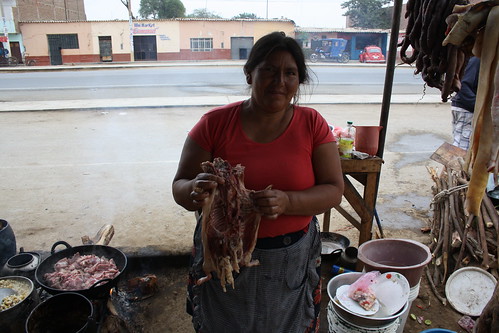
I have never been more pleased to leave a vehicle in my life and seriously hope it will be a long time before I get in another car. But I guess better than being robbed by bandits.
In Pirua we had a free bed in a fairly wierd place. A recreation facility for miners. There was a meeting going on to try to stop a new mine being built by a big company. But too much Spanish for me so I went and sat by the pool in the dark and listened to the radio. There was a free dinner too which was good. The Argentinians ate their fill and then went off to find a park somewhere to smoke. I went to bed. More exhausting than a day cycling.
This post relates to my bike trip in South America in 2010.
I now offer guided walks and walking holidays in the UK in Northumberland, the Pennines, the Lake District, Scotland and further afield.
I'm always keen for outdoor adventures to help people learn the skills to explore! My particular focus is mountain skills such as navigating with a map and compass and wild camping for expeditions.

